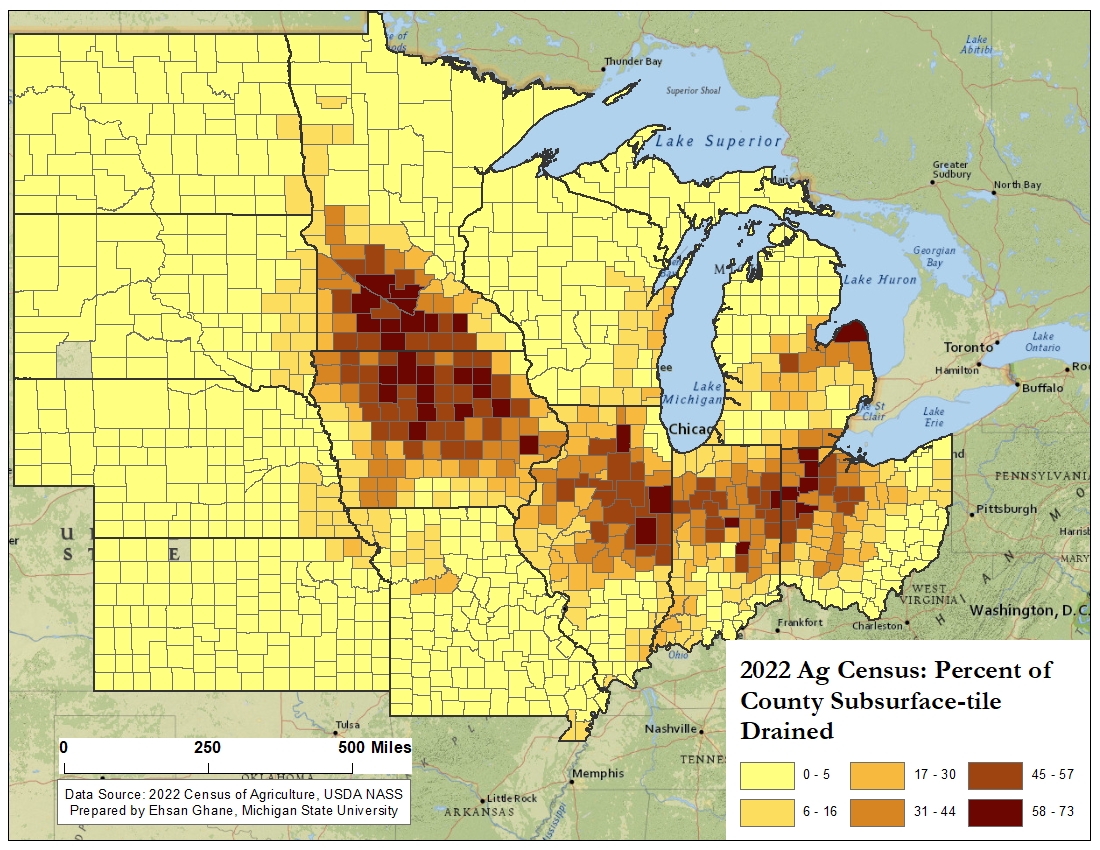Midwest Drainage
For the pdf version of this bulletin, click here.
8. Midwest Drainage
In the Midwest USA, subsurface drainage is mostly concentrated in the corn belt (Figure 9). In Michigan, subsurface drainage is more concentrated in the southeast and the Thumb region where the dominant natural drainage classes are very poorly drained, poorly drained, and somewhat poorly drained. Drainage class identifies the frequency and duration of wet periods under natural conditions.
In the Midwest USA, the depth of lateral drain pipes range from 2.5 to 5 ft. In Michigan, shallow drain pipes are typically installed at a depth of 28 to 30 inches. In general, narrower drain spacing is needed for fine-textured soils (clay, clay loam, and loam) and the wider spacing is needed for coarse-textured soils (sand and sandy loam). Overall, there has been a trend for narrower drain spacing, which allows for a quicker water removal from the field.
The 2017 Census of Agriculture showed 3.0 million acres of subsurface-drained farms in Michigan, which is a 17% increase from the 2.5 million acres in 2012. This value is estimated to be around 3.5 million acres in 2022. This is mainly because high-intensity, heavy rainfall is becoming more frequent. Also, subsurface drainage pays well.




 Print
Print Email
Email